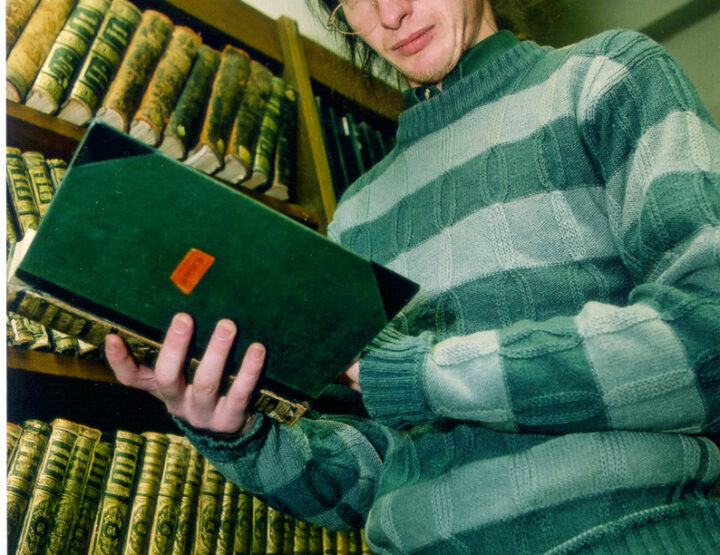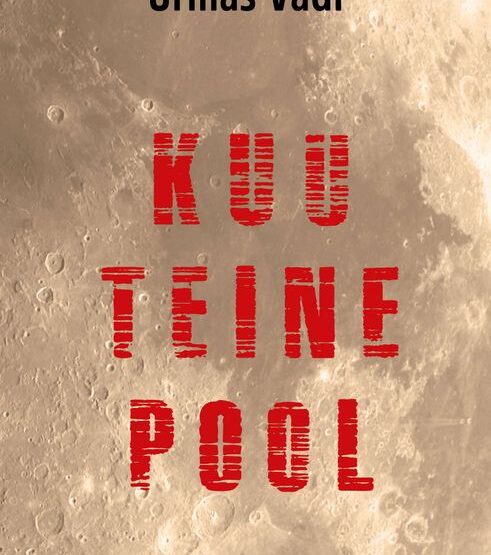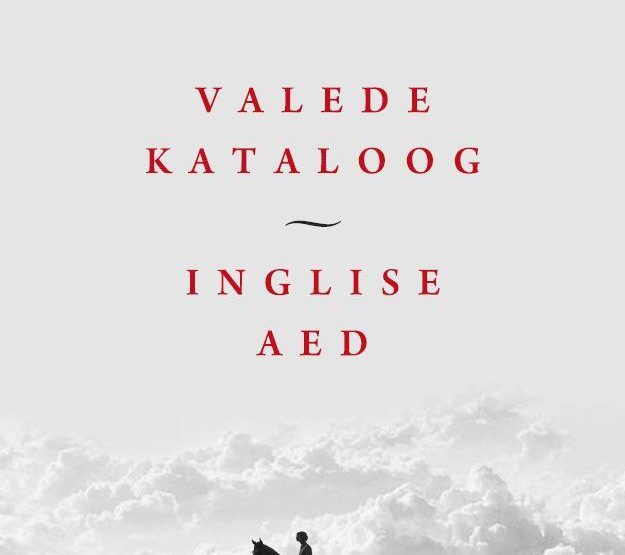In 2005, statistics revealed that the most popular author in Estonia, if judged by public library loans, was the American romance writer Nora Roberts, followed by Sandra Brown and Agatha Christie. The grand old man of Estonian letters, Jaan Kross (1920) managed a place at the end of the top twenty. It ought not to have been a huge surprise, since it is a truism that bestsellers sell better and are read more widely than other books. According to the UNESCO Index Translatorium, Agatha Christie is the second most translated author in the world (after Walt Disney Co) and Nora Roberts is thirtieth, one place before Karl Marx.
But the statistics also showed that public libraries themselves were complicit in the results. The recent acquisition of romances and other genre novels far exceeded the acquisition of the so-called ‘literary novels’, whether Estonian or foreign, classical or contemporary. The romance publishers in Estonia have targeted their production quite specifically at public libraries and not at bookstore customers.
This situation worried the Estonian Writers’ Union, which pointed to the discrepancy between the statistics and an article in the Estonian Public Libraries Act: “The mission of the public library is to provide the population with free and unrestricted access to information, knowledge, to the achievements of human thought and culture, and to support lifelong learning and self-education.” The Union called for a centralized acquisitions policy, which they hoped would tilt the selection of titles in favour of the present-day Estonian authors.
But the local librarians were not shaken by the criticism. Public libraries are important centres of local social activity, they argued, and their financing depends to a certain extent on attendance. The task of the libraries is to meet the demands of readers. Thus the egocentric, obscure, and obscene works of contemporary Estonian authors are not the right stuff with which to bait visitors. The latter point, though not explaining the absence of world classics from many public libraries, contains a grain of truth.
The debate gradually exhausted itself. There is still no centralized acquisition policy. In cooperation with the public libraries, the Writers’ Union organized a series of reading tours, although the results are not visible in the latest loan statistics.
But the debate was quite telling. First, it proved that the authority of the Estonian Writers’ Union is still intact. Literary life in Estonia revolves around this organization of three hundred members. True, not all are poets, novelists, or playwrights, since members include also translators, critics, scholars, and other men and women of letters. Established in 1923 in the newborn Republic of Estonia in order to promote literature and authors’ interest, in the postwar period of Sovietization the Writers’ Union was incorporated into the Stalinist system of artists’ unions. During this time it served as a proxy or buffer between individual writers and the Communist regime, keeping the authors in line while according them certain privileges.
During the 1960s and 1970s, most eastern European countries developed a double system of culture: official and underground, whose respective hierarchies often mirrored each other. Not so in Estonia. Perhaps due to the smallness of the population, the Estonians could not afford to have separate cultures, and the Writers’ Union in Soviet Estonia included communists and collaborators as well as nonconformists and dissidents. In many post-communist countries, the Writers’ Unions split or dissolved after the Velvet Revolutions, but the Estonian Writers’ Union is still in good shape – probably in a better shape than Estonian writing itself.
Sociologically speaking, literature and culture in general had a threefold role under the Soviet regime. They functioned as a substitute for consumerism, as an expression of collective identity, and as a safety valve, enabling public discontent to be channelled into certain controlled directions. In a wider historical perspective, eastern European nationalism can be seen as a quasi-literary enterprise, where writers played at least as big a role as politicians. In the mid-1990s, under regained independence and market capitalism, the number of novels published annually dropped dramatically and literature underwent a brief identity crisis. During the Cold War, Philip Roth quipped that in the West everything goes and nothing matters, while in the East nothing goes and everything matters. Estonia’s recent history has verified this (Jaan Kaplinski’s 1992 allegory of transition, From harem to brothel, makes a similar point).
Today one of the main functions of the Writers’ Union is to keep up the image of literature as something existentially important for society, and to compensate for the lack of a real market for Estonian literature. The potential readership of one million Estonian speakers is not enough to support even the bestselling authors. Another buttress for Estonian literature is the Cultural Endowment – a public foundation (re-) established in 1994 that annually spends on literature just under one million euro raised from tax on tobacco, gambling, and alcohol. About half the money is assigned to authors’ fees and publishing subsidies for books and magazines, a quarter is handed out as grants to individual writers, and the remaining quarter is spent on literary awards, festivals, research, conferences, presentations, and other public events.
In normal literary life, the author writes and the product is bought by many interested readers or supported by a few generous patrons. In Estonia, the readers who matter are mostly the critics or fellow writers, and the main provider, however indirectly, is the State. Still, the components of literary life are relatively autonomous of each other. The authors best appreciated by critics and colleagues are not necessarily the ones most talked about in the media. The authors most talked about in the media do not necessarily sell the best. The bestsellers (over 1500 copies) often go unappreciated by critics. And authors translated abroad can be quite marginal at home.
Now what about the librarians’ rejoinder that the contemporary Estonian novel is too self-centred, esoteric, or obscene to be recommended to the patrons of village libraries? The accusation of obscenity can safely be put aside, although for a while the issue was artificially bloated in the press. But there is something in the charge of self-centeredness, since many writers have claimed, explicitly or implicitly, that the only possible way to write authentically today is to draw directly from one’s own experience. Thus Tõnu Õnnepalu (b.1962) has declared in his book Harjutused (Exercises, 2002, written under the name of Anton Nigov): “In this culture, where I am and what I am, the only books that can be written are the ones in which there are no other characters except the I. Nothing but internal intuitions externally observed. Books with characters, with all kinds of uncles and cousins, their lordships, council registrars, Ivan Pavloviches and Lady N’s belong to the past, to the great times of important actions. You can only rewrite these books, with minor changes. If I wish to remain honest and avoid undue copying, I have nothing to talk about except this I.”
Fortunately, Tõnu Õnnepalu’s ‘I’ is sufficiently rich, intelligent, and clear-sighted to make his autobiographical musings and reflections on culture, daily politics, and sexuality irresistibly, even voyeuristically readable. In August 2006 the weekly Eesti Ekspress polled literary critics to identify the best authors and books after 1991. Õnnepalu, with his five books of prose and several poetry collections, written under various pen names, came in first. Although his two attempts at a traditional novel with a developed plot and elaborate set of characters were quite embarrassing, his confessional, (semi-)autobiographical texts have been highly acclaimed, and rightly so. The latest, Harjutused, is a mixed genre of memoir, confession, journal, and letters, written during a short period in the 1990s, when the author served as the Estonian cultural representative in Paris. Here, he submits all his past commitments and feelings to merciless scrutiny. This elegiac piece contains perceptive insights into cross-cultural resentment, snobbery, and self-deception. The main topic of his writing is often the very writing itself, as the means of the construction of one’s own identity.
Tõnu Õnnepalu’s contemporary Peeter Sauter (1962) places somewhat greater distance between himself and the protagonists of his books. But his relationship with the tradition of the novel is as uncomfortable as Õnnepalu’s. “I don’t like to call myself a writer; it’s kind of disturbing, unsettling,” he liked to repeat, even after publishing several short story collections. Though he finally seems to have resigned himself to the role of a writer, he has so far not attempted a real novel. Instead, his oeuvre consists of stories narrated in the first person by a character who craves desperately for authentic existence, life unfettered by social conventions or personal bonds. “I want simply to be. I want to be an empty and bored nobody.” But simply being is still not enough for him, because sometimes he feels that even this is burdensome, or reflects: “Everything repeats itself. Activities repeat themselves, and so do thoughts.” And in another passage: “I feel as if I am selling my own life to myself. I’ve learned that at school, and from literature, which describes life and thus kind of adds value to it.” Sauter’s latest book, Vere jooks (Haemorrhage, 2006), testifies to his progress towards tighter narrative coherence. His typical protagonist, once a harmless loafer, has recently developed a dark violent streak. His cravings for ‘pure being’ or ‘authentic existence’ result in senseless, almost ritual acts of destruction – often on himself – as if violence is the last resort by which to resist the inevitable flattening of life. Sauter’s international reputation rests mainly on his weeks-long drinking binge on board the Europe Literary Express in 2000. But his literary skills are no less remarkable. Sauter’s ability to elicit sympathy for his unconventional characters and shake up our cosy moral prejudices has made him, in Tõnu Õnnepalu’s words, the great moralist of his generation.
The freewheeling genre of mixing autobiographical reflection and essayistic musing, was in fact pioneered by Jaan Kaplinski (1941) in the 1980s. Kaplinski is probably the best-known Estonian public intellectual and poet. He has taken part in two poetic revolutions: the first, in the 1960s, consisted in introducing modernist diction and oriental imagery into Estonian poetry. The ambition of his incantatory songs was to heal the cleft between the self and the world, private and public being. Despite (or rather thanks to) official suspicion, he achieved almost rock-star celebrity. In the early 1980s, in the second of the two revolutions, he renounced the shamanic claims of his poetry and took an ‘antipoetic’ turn – purifying his language of literary tropes and concentrating on recording little, everyday epiphanies. In recent decades he has switched to prose, writing essays, travelogues, memoirs, and ‘theo-fiction’ in the manner of British philosopher and science fiction writer Olaf Stapleton. Seesama jõgi (The Same River, 2007), which took almost twelve years to write, is his first proper novel. This semi-autobiographical Bildungsroman, set in the early 1960s, narrates the efforts of Kaplinski’s youthful alter ego to lose his innocence and attain sexual and mystical knowledge. The twenty-year-old protagonist finds an unofficial teacher in a retired theologian, who is out of favour with the communist authorities. After a summer spent in intellectual and erotic soul-searching, the sexual and political intrigues finally overlap, leading to a quasi-solution. KGB and university apparatchiks take a close interest in the teacher-disciple relation of two poets. The student outgrows his mentor, who despite accusing the human race of puerility, turns out to be a big child himself. This, in brief outline, is the novel’s plot, in which realist descriptions alternate with mystical epiphanies, psychological probings, and reflections on culture, with precisely rendered shots of the social climate of the period, big emotions with subtle ironies. These ‘emotions recollected in tranquility’ and tongue-in-cheek observations of his former naive self, together with unpretentious, nimble, and occasionally self-mocking style, make the novel an unqualified success.
While Kaplinski’s novel has a kind of mellow, Indian summer-like quality, the latest novel by Ene Mihkelson (1944), Katkuhaud (Plague grave, 2007), is a deeply disturbing book. In contrast to the stylistic fluency of Kaplinski, Õnnepalu and Sauter, her novels have an abstruse, heavy manner. But this is entirely justified by the gravity of her subject matter. As with all the authors mentioned above, Mihkelson’s novels draw heavily from her personal history, which contains all the necessary elements of great tragedy. Her previous novel, Ahasveeruse uni (Dream of Ahasuerus, 2001), was voted the best book of the post-1991 period by the Eesti Ekspress poll.
The elusive and troubled narrator of Katkuhaud has been raised by her aunt after her parents went into hiding in 1949 to escape deportation to Siberia as kulaks – a fate met by at least 70 000 Estonians under Stalinism. In 1953, her father was killed by the NKVD (Stalin’s security police), two years later her mother ‘legalized’ herself, in other words, came out of hiding. The narrator tries to discover the exact circumstances of her father’s death and what role his fellow forest brethren (or “bandits” in Soviet parlance), his wife, and her sister played in it. Who betrayed whom? Were the forest brethren so deeply infiltrated by the NKVD to make them mere pawns in bigger intelligence games, involving even the British MI6?
After the restoration of the Estonian Republic, the ordeals of the forest brethren have been officially depicted as unequivocally heroic acts of resistance. Mihkelson’s novels reveal a more complicated story. The line demarcating collaboration from resistance, and resistance from terrorism, were often very fine indeed. A ‘Plague grave’, a grave for the victims of pestilence whose exhumation can start a new epidemic, serves as a metaphor for buried memories of the mid-twentieth century. The novel is composed as a series of encounters between the narrator and her aunt, who tries to confess her role as a NKVD informer but is not quite able to bring herself to do so. Mihkelson’s novel overturns the cheap stereotypes of trauma narration such as redemption through commemoration. It shows quite unambiguously that, in cases like hers, truth does not make you free. But neither, of course, does denial. Mihkelson’s personally experienced story touches something very sensitive and significant in today’s collective life, in which memories and commemoration have usurped the place once occupied by utopias and designs for the future.
However, there are novelists who do not tap directly into their autobiography or personal experience for their novels. “Books with characters, with all kinds of uncles and cousins” are still being written – with varying success. But the most conspicuous of them are not about present-day Estonia. Rather, we have pretentious magical realist and New Age parables, often set in imaginary and mythological places, where dreams and reality get mixed. The result is often spoiled by simpleminded conception and verbose, cliché-ridden style that cries out for trimming. Reading some recent, even critically acclaimed books, one cannot help being reminded of Nabokov’s complaint how “one finds it so difficult to explain to people why a particular book which seems chock-full of noble emotion and compassion, and can hold the reader’s attention on a theme far removed from the discordant events of the day, is far worse than the kind of literature which everybody admits is cheap.”
Therefore it is all the more gratifying to find a traditional realist novel that steers clear of either mysticism or mawkishness. Without doubt, the most accomplished writer working in the realist vein is Mats Traat (1936). His latest book, Naised ja pojad (Women and Sons, 2006), won the annual award of the Cultural Endowment. It is the latest instalment of a dozen-volume roman fleuve, the family saga of a South Estonian farming household that represents the rapid modernization of Estonian society and the birth of nation during the last two centuries. The latest part takes us to the 1930s, the period of economic crisis and emergence of the quasi-fascist movement, the Veterans of the War of Independence. Mats Traat has done his homework thoroughly and the details of the relationships between the social strata of the predominantly rural society are rendered convincingly. His cross-sections of society give a vivid account of the rapid emergence of the whole spectrum of modern types previously unknown in rural society: femme fatale, businessman, political manipulator, parvenu, socialist, bohemian, and so on. In contrast to the established Estonian novelistic tradition of celebrating the protestant work ethic, Mats Traat’s vision is grim and subversive. Today, with historical hindsight, we can probably better see how illusory and at the same time heroic the efforts of Estonian farmers to create an autonomous universe in their farms, where they could rule as sovereign as God himself, really were.
By far the most popular author writing in Estonia now is Andrus Kivirähk (1970), whose plays and short stories explore the relations of juvenile folly, artistic creativity, and national myth making. His immense popularity owes to his peculiar brand of burlesque, absurdist, irreverent, and deadpan humour. How well this kind of humour would travel in translation is hard to say, since there is something quintessentially Estonian in it. Kivirähk’s previous novel, Rehepapp ehk November (The old barny, or November, 2002) drew on folk tales in order to describe the mixture of cynicism, cunning, and naivety characteristic of a nation of serfs. Despite its local allusions and obsession with Estonianness, it has been translated into Norwegian, Hungarian, and Finnish. However, the book that made Kivirähk’s name was Ivan Orava mälestused ehk minevik kui helesinised mäed (The memoirs of Ivan Orav, or the past as azure mountains, 1995), a hilarious travesty of twentieth-century Estonian history that pokes fun indiscriminately at nationalist myths. His latest novel, Mees, kes teadis ussisõnu (A man who knew the snake words, 2007), is a parabolic fantasy novel about the painful topic of the death of a culture, the extinction of a way of life – not a funny topic at all. The narrator is the last representative of the primordial forest people whose tribe has been pushed aside by technologically “more advanced” farmers. I put “more advanced” in quotation marks in order to emphasize what is probably the main idea of this strange novel – progress and regress, innovation and conservatism, are shown to be totally relativistic and interchangeable. What matters is not the technological advances themselves, but the cultural fads associated with them and that lend them prestige. The forest people, whose technology consists in magical snake language ensuring them necessary sustenance and domination over nature, are defeated not so much by the plough and the sword but the ideas associated with them. However, there seems to be no regret about this either, since the life of the forest people is shown to be, if not poor and short, then at least nasty and brutal. With this book, Kivirähk seems to have added his voice to the discussions of the demographic future of Estonia, which, with its present birth rate, cannot sustain its society, economy, culture, and literature for long. But the voice is so oracular, ambiguous, relativist, and almost nihilist, that it is hard to say what lesson, if any, it imparts.
I don’t know whether it is right to expect novels to provide a panorama, or at least an idea, of how it is to live in a certain place at a certain time. Writers may have other, equally legitimate aims in mind. But a future historian who approaches present-day Estonian fiction with such expectations will likely be frustrated. Most contemporary Estonian novels deal with the historical past or with imaginary times, while those that do deal with the present are narrowly focused on private experience. The broad pictures are not about the present and the pictures of the present are not broad. Still, if he reads the novels not as documents but as archaeological artefacts, which even against their will testify to the truth of their times, he will get a fairly good idea of the hopes and fears, anxieties and obsessions, of post-communist Estonia.
Post-communist Estonia has not yet produced a Great Estonian Novel, and maybe it never will. But if we take Tõnu Õnnepalu’s merciless examinations of modern self-identity; Jaan Kaplinski’s subtle oscillations between celestial and carnal love and private and political anxieties; Peeter Sauter’s existentialist craving for authentic being and the unmotivated violence it engenders when confronted with bourgeois comfort; Ene Mihkelson’s Shakespearean bundles of betrayal and revenge, memory and forgetting; Andrus Kivirähk’s wistful relativization of historical progress; and Mats Traat’s portrait of the confrontation between rural traditions and modern manners – then we probably get as good an insight as any into the condition of Homo Estonicus.
Original in English
© Märt Väljataga
© Eurozine
© ELM no 25, autumn 2007
Literary perspectives: waiting for the Great Estonian Novel
By Märt Väljataga
–
Share:




